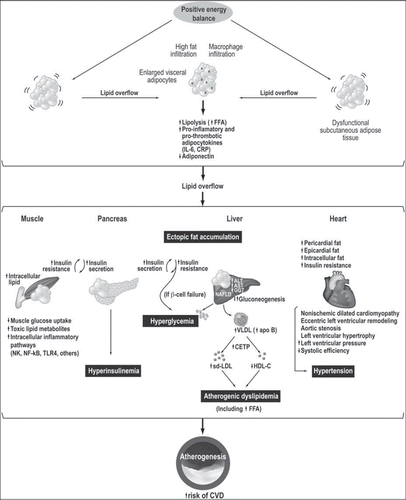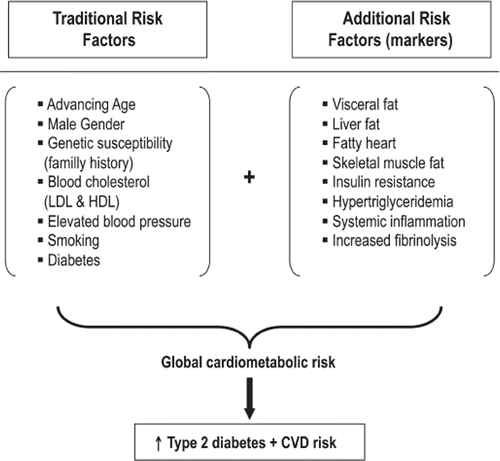Figures & data
Figure 1. Schematic representation of abnormal visceral adipose tissue development leading to the storage of lipids at undesired sites. This phenomenon has been described as ‘ectopic fat’ deposition. According to this model, when energy intake is greater than energy expenditure, a dysfunctional subcutaneous adipose tissue may be unable to store appropriately the dietary energy excess, eventually leading to lipid overflow and to visceral fat deposition. This excess of visceral adiposity is associated with an altered free fatty acid metabolism with the release of adipokines as well as with adipocyte hypertrophy and increased fat storage in non-adipose organs, notably liver and skeletal muscle, and in other organs such as the pancreas and the heart. Excess adipocyte hypertrophy leads to ectopic fat storage and metabolic abnormalities such as insulin resistance, atherogenic dyslipidemia, hypertension, systemic inflammation, and eventually increases the risk of CVD.

